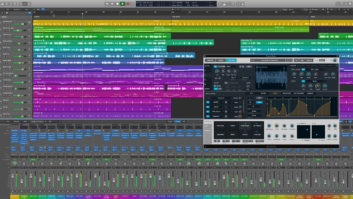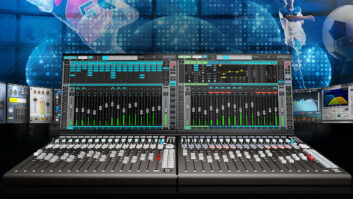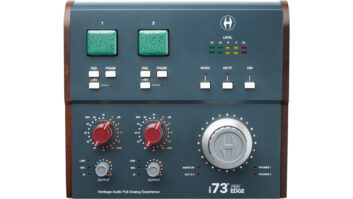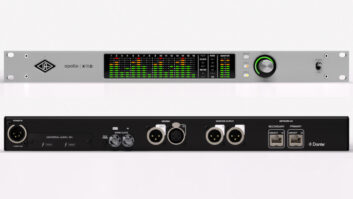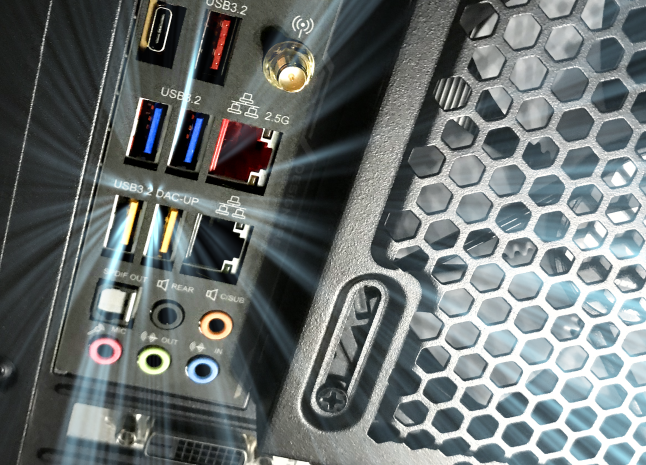
I recently bought a new Windows Audio PC from PCAudioLabs.com, which builds custom computers for clients like Peter Frampton and BT. With the computer industry in flux, I had many questions about what a computer should have to take care of my audio/video production needs. Owner Jayce Murphy walked me through the answers, which seemed like useful information for anyone who wants to upgrade their computer—and well worth disseminating to audio pros. So the first question is…
AMD or Intel?
Overall, the gap is pretty narrow. Intel still has a slight advantage with Thunderbolt compatibility across audio products, but now Thunderbolt is becoming more accessible in Ryzen motherboards and CPUs, so we’re actively exploring that. Ryzen’s price is also more competitive. It’s an exciting time, because the latest Intel X-Series and AMD Threadripper CPUs both excel at stuffing cores in a single CPU.
How important is Thunderbolt?
A single Thunderbolt interface will have better latency than USB, but where Thunderbolt really shines is daisy-chaining multiple interfaces. It’s still evolving; although more motherboards are starting to include Thunderbolt natively, we use Thunderbolt 3 add-in cards. TB 4 to 3 is backward-compatible and has the same form factor, but to get to TB 2, it will require an adapter.
Are high-performance gaming computers a good choice for pro audio and video?
Gaming machines are graphics-driven, so they have different priorities. A gaming rig could have two GPUs, but even those doing extensive pro video editing don’t necessarily need two GPUs. We’re also not fans of overclocking; we choose max efficiency and stability for mission-critical work. The advantage of building machines is optimizing them for specific purposes. Gaming machines do what they do well, but they aren’t optimized for content creation.
What’s the key to low-latency performance?
The CPU is most important, next is RAM, and then how they work together to manage those resources. Then comes the recording/streaming drives—we’re primarily using m.2 NVMe SSDs now—and finally the audio interface, because not all drivers are created equal. Any system is only as good as its weakest link when it comes to latency.
What do you think about locking in a Windows 7 system as compared to moving to 10?
After going through the Vista or Windows 8 disasters, I understand, but Microsoft addressed a lot of audio-related issues in Windows 10, and smart developers took advantage of the new architecture for better performance. It’s way ahead of its predecessors.
How much RAM do you really need?
16 GB covers most needs, while 32 GB gives extra headroom. 64 GB may not matter that much for some, but if you use a lot of NI Komplete or East-West instruments, both companies really know how to work with high-core machines and large RAM capacity. In big projects with their virtual instruments, you can even benefit from 128 GB of RAM, or more.
Craig Anderton’s Multimedia PA&RT Summit Keynote Now Available
Graphics cards are sometimes fraught. Any recommendations?
Pro audio doesn’t need monstrous graphics cards. 1 or 2 GB, with the ability to feed up to three monitors, covers most scenarios. Simpler is better; we want proven components that don’t make noise and will last for 10 years. If you need four monitors, that’s a different situation.
What about ports? USB-C is supposed to take over the world, but USB 2 and 3 peripherals seem plentiful.
We’ll see more motherboards incorporating USB 3.2 with USB-C connectors and Thunderbolt, but Type A USB isn’t going anywhere for quite some time. It’s ubiquitous.
OBEDIA, your parent support company, supports Mac and Windows. What are the biggest issues on each platform?
People assume the Mac is bulletproof, but we have to stay on top of OS updates, and do quite a bit of support in general. With Windows, issues tend to be more about incompatibilities—for example, updating Windows exposes a graphics driver flaw that needs fixing. Use Time Machine on the Mac and System Restore for Windows, so you can always get back to a known working state. Image your C: drive occasionally, too.
Software Tech: Livestreaming in the Age of Pandemic
What about virus protection?
Microsoft Defender does what’s needed. We ship machines that allow automatic updates, because most updates are security-related. People are wary of automatic updates, but on both Mac and Windows, the big updates are usually optional, not automatic. You can do them after any issues have been resolved.
What Windows 10 tweaks improve performance?
Keep background tasks from running—everything should be purpose-driven. If you use Zoom, Skype or run anti-malware programs because your kids play with your computer, create a separate user profile to handle those scenarios. A great source for tweaks are from the company that makes your software. Their recommendations are similar, but not always identical.
PCAudioLabs • www.pcaudiolabs.com
